|
 |
|
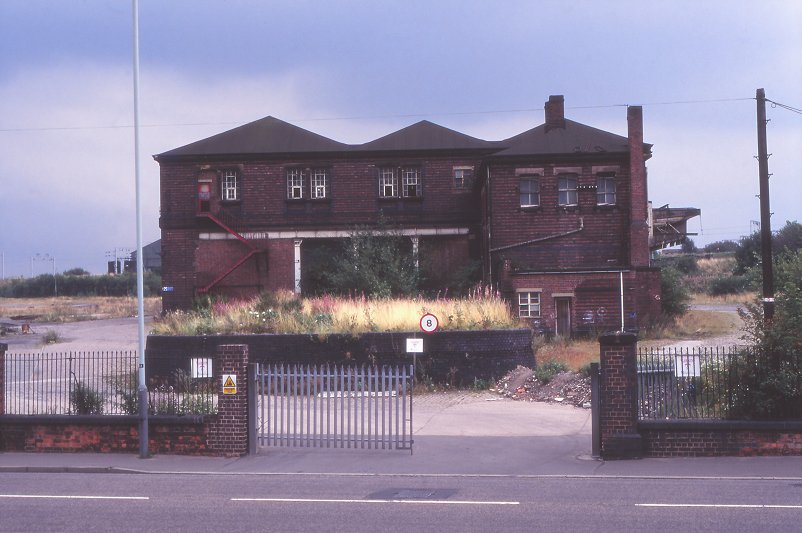
The main entrance to the Midland Railway goods depot
in Wednesfield Road. |
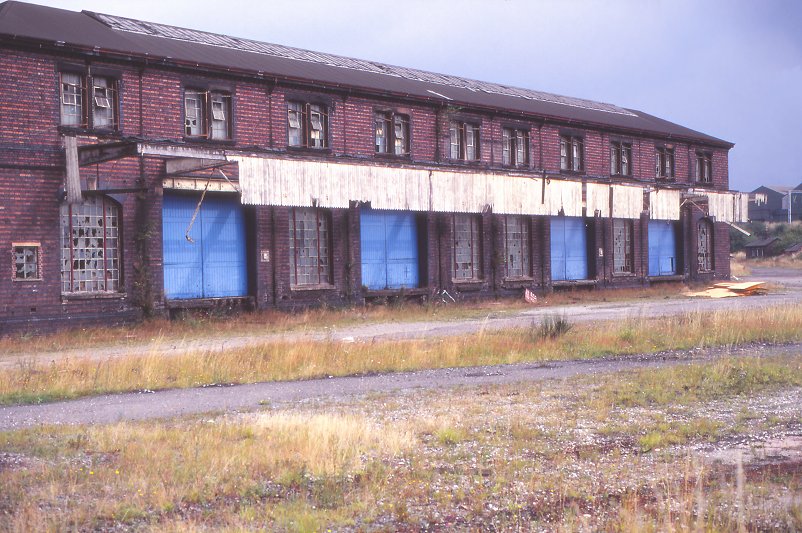
The western side of the
Midland Railway goods depot, awaiting
demolition.
It took three years to build the goods depot,
from November 1878 to November 1881. |
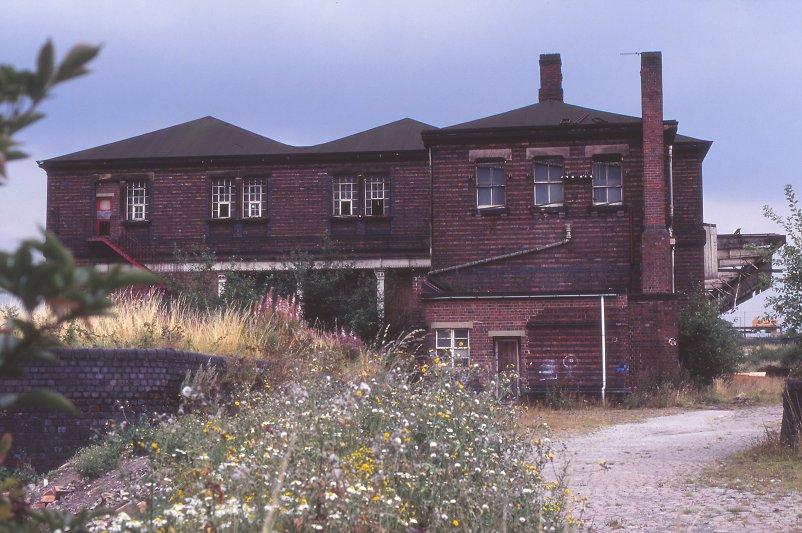
Another view of the
Midland Railway goods depot from Wednesfield
Road. In 1966, British Rail decided to
centre its local goods operations in the
newly remodelled Bescot Yard and so most of
the other local goods depots soon closed.
The Midland Railway goods depot was then
leased to Railstores Limited but was
little used. By October 1988, when the lease
on the building expired, the depot was in a
bad state due to a lack of routine
maintenance. |

The north western
corner of the goods depot. Late in 1988 the
building became part of Wolverhampton steel
terminal and gained a new lease of life. It
was initially heavily used, but due to the
changing economic climate it fell into
disuse again.
It was demolished in the mid 1990s to make
way for the Royal Mail sorting office. |
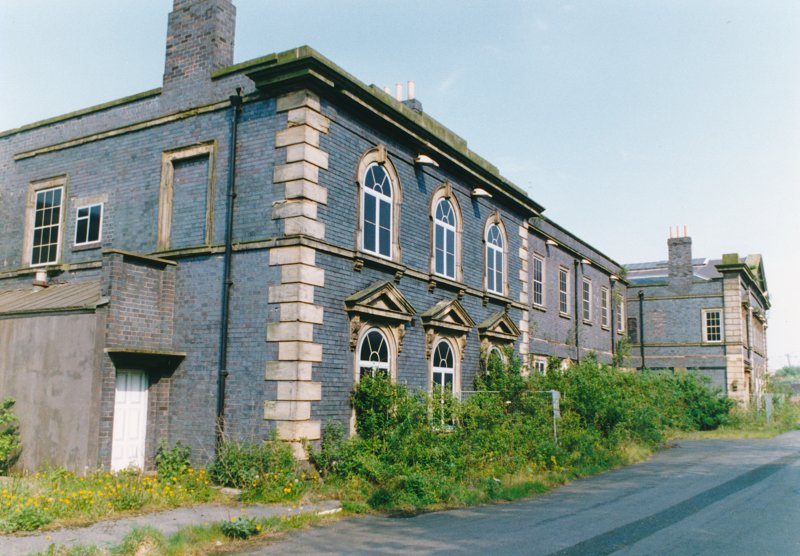
The empty Low Level
Station, which at the time was owned by the
local authority. Plans for its use included
a museum featuring locally made vehicles,
but it never came to fruition. |
|

Another view of the
empty Low Level station. |
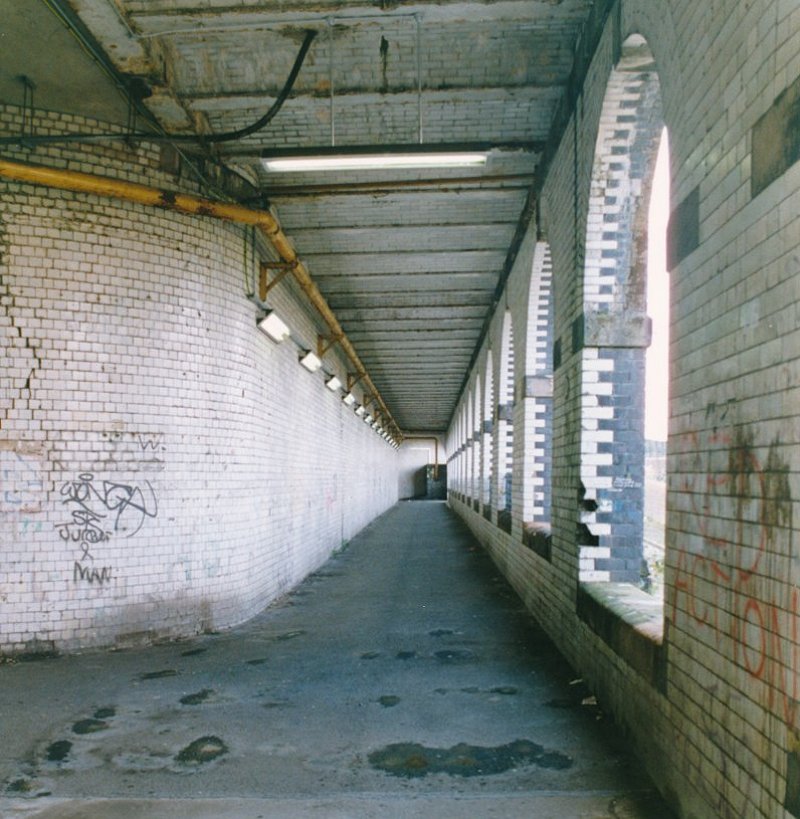
The old pedestrian access to the Low Level
Station from the High Level Station, known
as "The Colonnades". It was restored in
2003, but is no longer in use. |
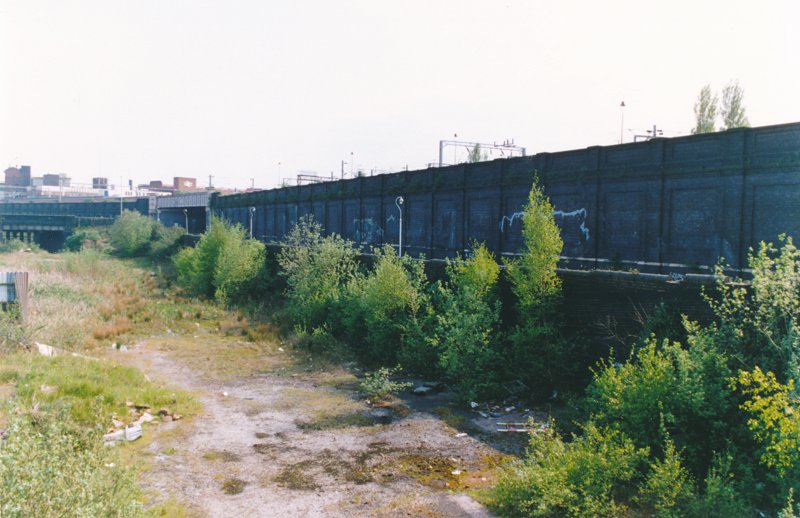
The old Great Western Railway track bed, now
occupied by the multi storey tower block
'Liberty Heights', and 'Heantun Point'. All
providing student accommodation. Lock
Street opposite is now part of a national
cycle route. |
|

The old foot bridge
that was across the Great Western Railway,
seen from Lock Street. It gave pedestrian
access to what was then Bridge Street,
leading to Culwell Street and Grimstone
Street. |
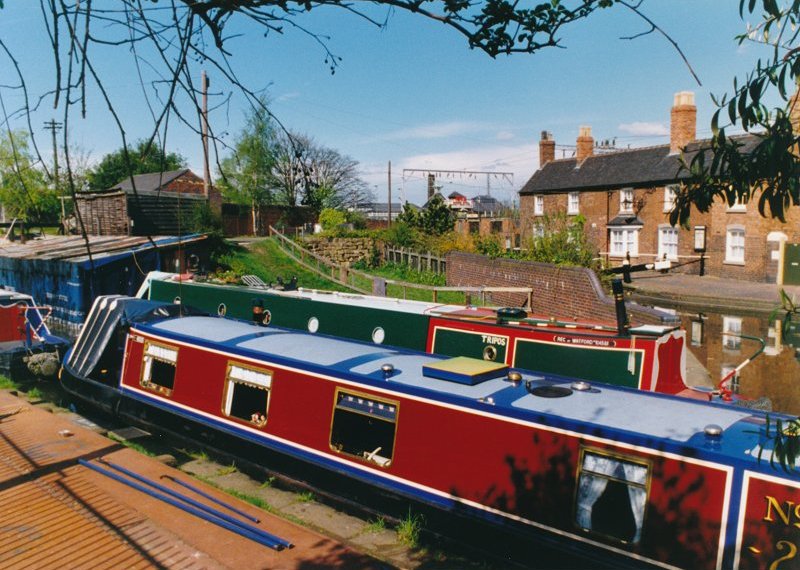
Canal boats moored in the remaining part of
what was known as Victoria Basin, opposite
the old cottages by lock 1 (top lock). To
the left of the cottages is the Sablon
Welding Company’s workshop, where ornamental
ironwork was made. |
|

Looking across the canal to the derelict Chillington Interchange
Basin. |
|

A close-up view of the derelict Chillington Interchange
Basin, as seen from the top of the
bridge.. |
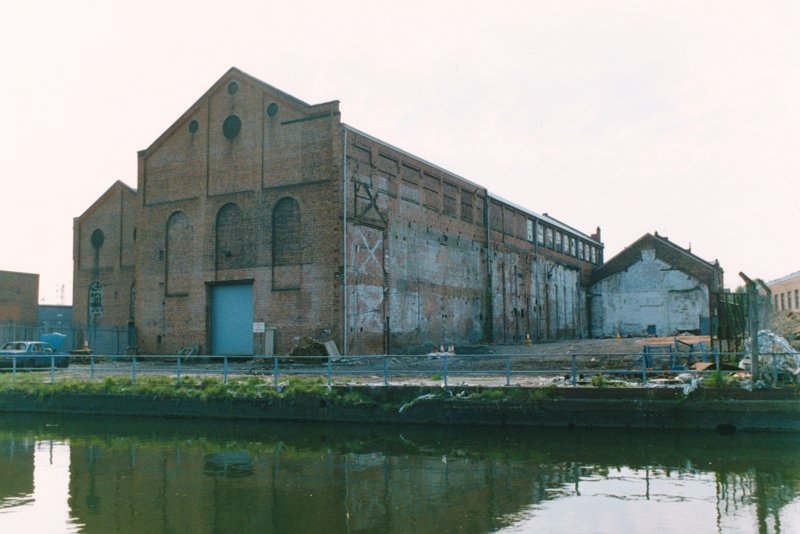
The remaining buildings from the Commercial
Road Power Station, which closed in the late
1970s. It opened on Thursday the 30th
January, 1895 with a ceremony performed by
the famous 19th century physicist Lord
Kelvin, President of the Royal Society. It
initially supplied 2,000 volts DC to several
sub-stations where the supply was converted
to 220 volts DC by motor-generators, for
distribution to around 5 square miles. The
initial generating equipment was supplied by
Thomas Parker Limited. |

Another view of Commercial Road Power
Station, which by 1925 had a capacity of
23MW supplying an area of 47 square miles.
On the site was a large cooling tower, a
brick chimney, 115 feet high and a steel
chimney, 175 feet high. A three phase AC
distribution system was introduced in 1933,
by which time the station supplied an area
of 106 square miles. In 1936 a new
generating hall was added and on the 1st
April, 1948 the industry was nationalised,
local supplies then came under the control
of the Midlands Electricity Board. |

The remains of a four
storey lodging house and the roving bridge
at Aldersley Junction.
The lodging house had stables on the ground
floor, and offered overnight accommodation
for canal boatmen and their families. Horses
entered the stables via the small arch in
the bridge, by where the remains of several
small coal-fired ovens can be seen. |
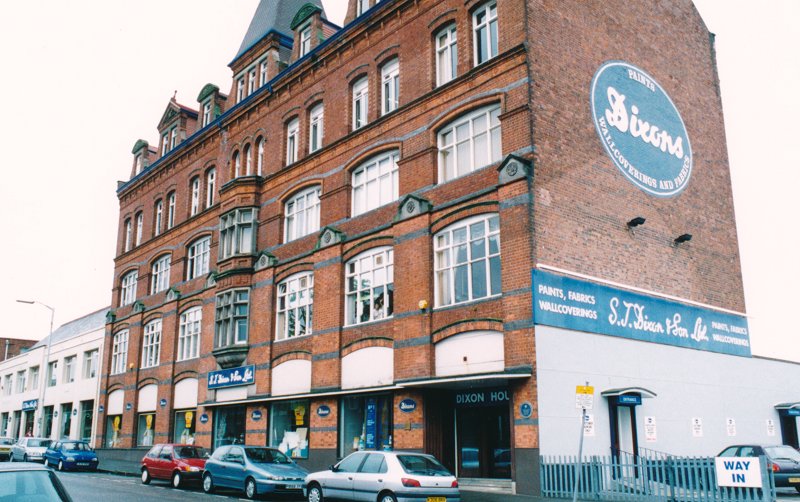
S J Dixon & Son
Limited’s fine building in Cleveland Road,
which was built in 1885 as an extension to
Forder & Company’s factory. At that time the
80 feet high building was the tallest
structure in Wolverhampton (other than
church towers and spires). There are six
floors including the basement. On the 1st
December, 1893 the building was sold to
Thomas Reade and during the following year
Reade Brothers and Company, Limited,
manufacturing chemists, was formed. The firm
moved into the Cleveland Road building and
were there until 1959 when the building and
the adjoining houses, were put-up for sale
and were acquired by S. J. Dixon & Son
Limited in September 1960. |
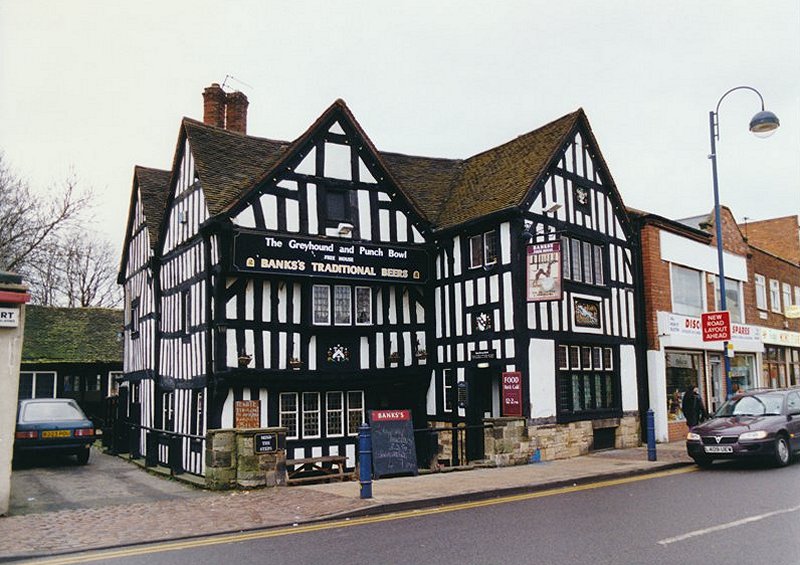
The Greyhound and
Punch Bowl, High Street, Bilston. It was
built in about 1450 by John de Mollesley and
originally called Stowheath Manor. It is
Grade II* listed and was damaged as the
result of an arson attack in 2023. |
 |
|
Return to
the beginning |
|